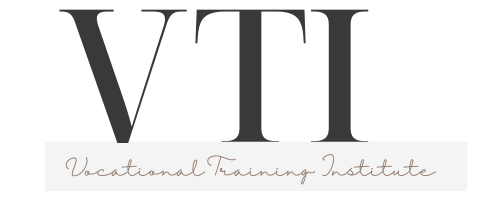Imagine yourself navigating the complex world of vocational training, where ethical dilemmas lurk around every corner. From admission criteria to confidentiality challenges, discrimination to conflicts of interest, this article explores the ethical implications and provides solutions to help you navigate these treacherous waters.
Whether you’re a student, trainer, or involved in the vocational training industry, this guide will equip you with the knowledge and tools to promote ethical behavior and professionalism in your journey.
Key Takeaways
- Fairness and transparency in selection are crucial in vocational training programs to ensure ethical standards are upheld.
- Confidentiality challenges can be addressed by implementing clear policies, providing proper training, and using secure data storage systems.
- Discrimination and bias can be tackled by raising awareness, promoting equal opportunities, providing support and accommodations, and eliminating biased content or language.
- Unconscious bias can be addressed through training, actively recruiting a diverse range of participants and trainers, reviewing and revising materials, establishing accountability measures, and providing support for affected individuals.
Ethical Implications of Admission Criteria
You should consider the ethical implications of admission criteria when making decisions about vocational training applicants. Admission fairness and transparency in selection are crucial aspects that need to be taken into account. It’s important to ensure that the criteria used for admission are fair and unbiased, allowing equal opportunities for all applicants. This means that factors such as gender, race, and socioeconomic background shouldn’t be considered when evaluating applicants. Instead, the focus should be on their qualifications, skills, and potential to succeed in the vocational training program.
Transparency in the selection process is also essential. Applicants should be provided with clear information about the criteria that will be used to evaluate their applications. This includes the weightage given to different factors, such as academic qualifications, work experience, and personal statements. By being transparent, the institution can build trust and confidence among applicants, ensuring that the selection process is fair and unbiased.
To address these ethical implications, institutions can implement various measures. One solution is to establish a committee or panel that reviews and evaluates applications. This committee should be diverse, representing different perspectives and backgrounds to minimize bias. Additionally, regular training and workshops can be conducted to educate the committee members about unconscious biases and the importance of fairness in the selection process.
Confidentiality Challenges in Vocational Training
The confidentiality challenges in vocational training can pose ethical dilemmas for both trainers and trainees. Privacy concerns and proper data handling are crucial aspects of maintaining confidentiality in vocational training programs. Here are four key factors to consider when addressing confidentiality challenges:
-
Clear Policies and Procedures: Establishing clear and comprehensive policies and procedures regarding confidentiality is essential. Trainees should be made aware of their rights and responsibilities regarding the handling and protection of sensitive information.
-
Confidentiality Training: Providing trainees with proper training on confidentiality is vital. This includes educating them on the importance of privacy, data protection, and ethical responsibilities. Regular training sessions can help reinforce these principles.
-
Secure Data Storage: Ensuring that all trainee data is stored securely is crucial in maintaining confidentiality. Implementing secure digital systems, encryption techniques, and access controls can help protect sensitive information from unauthorized access.
-
Confidentiality Agreements: Requiring trainees and trainers to sign confidentiality agreements can help enforce the importance of confidentiality. These agreements outline the expectations, consequences of breaches, and the commitment to protecting sensitive information.
Addressing Discrimination and Bias in Training Programs
To address discrimination and bias in training programs, it’s crucial to tackle unconscious bias and ensure equal opportunities for all participants.
Unconscious bias can unknowingly influence decisions and perpetuate discriminatory practices, so raising awareness and implementing bias training can help mitigate its impact.
Additionally, it’s essential to actively promote equal opportunities by implementing fair selection processes, providing necessary support and accommodations, and fostering an inclusive and diverse learning environment.
Tackling Unconscious Bias
Addressing unconscious bias is a critical step in creating an inclusive and fair vocational training program. Unconscious biases are deeply ingrained attitudes and stereotypes that can impact decision-making and perpetuate discrimination.
To tackle unconscious bias in training programs, consider the following:
-
Provide unconscious bias training: Offer workshops or seminars that raise awareness about unconscious bias and its effects. This can help participants recognize and challenge their own biases.
-
Promote diversity and inclusion: Actively recruit a diverse range of participants and trainers to ensure different perspectives are represented. Encourage an inclusive environment where everyone’s voice is heard and valued.
-
Review and revise materials: Regularly review training materials to identify and eliminate any biased content or language. Ensure that examples, case studies, and scenarios used in training are inclusive and reflect real-world diversity.
-
Establish accountability measures: Hold trainers and participants accountable for addressing unconscious bias. Establish mechanisms for reporting and addressing bias incidents, and provide support for affected individuals.
Ensuring Equal Opportunities
You should regularly assess and address discrimination and bias in vocational training programs to ensure equal opportunities for all participants.
Creating an inclusive environment and promoting diversity are essential in achieving this goal. Discrimination and bias can manifest in various ways, such as unequal access to resources, biased evaluation processes, or limited representation of marginalized groups.
To address these issues, it’s crucial to establish clear policies that promote equal opportunities and discourage discriminatory behavior. This can include implementing diversity training programs, fostering an inclusive culture, and actively recruiting participants from diverse backgrounds.
Regularly monitoring and evaluating the training programs for any signs of discrimination or bias can help identify and rectify any unequal treatment.
Balancing the Role of Trainers as Educators and Salespersons
As a trainer, it can be challenging to strike a balance between being an educator and a salesperson. Your ethical responsibilities as an educator require you to prioritize the needs and interests of your trainees, ensuring that they receive high-quality training that meets their objectives. However, as a salesperson, you may feel pressured to promote and sell training programs or products, which can sometimes conflict with your role as an educator.
To navigate this dilemma, consider the following strategies:
-
Transparency: Be upfront with your trainees about any marketing tactics or sales goals associated with the training program. This will help establish trust and ensure that trainees are fully aware of any potential biases.
-
Focus on value: Instead of solely focusing on making a sale, emphasize the value and benefits of the training program to your trainees. Highlight how it can enhance their skills, knowledge, and career prospects.
-
Personalize the approach: Tailor your training programs to the specific needs and interests of your trainees. By understanding their goals and aspirations, you can deliver a more meaningful and relevant training experience, enhancing their satisfaction and reducing the need for aggressive sales tactics.
-
Continuous improvement: Regularly evaluate and update your training programs based on feedback from trainees. This will demonstrate your commitment to their success and ensure that you’re offering the best possible training experience.
Ethical Considerations in Assessing and Grading Students
To ensure fairness and accuracy, it’s important to consider ethical considerations when assessing and grading students. Ethical considerations play a crucial role in the education system, as they help maintain integrity, transparency, and equity. When grading students, it’s essential to treat all learners fairly and provide them with equal opportunities to demonstrate their knowledge and skills.
One ethical consideration in assessing and grading students is the issue of bias. It’s vital for educators to be aware of their own biases and ensure they don’t influence their evaluation of students’ work. This can be achieved by using rubrics or standardized grading criteria that are objective and clearly defined. Additionally, educators should strive to provide constructive feedback that focuses on areas for improvement rather than personal opinions.
Another ethical consideration is the importance of maintaining student confidentiality. Grading should be done in a private and confidential manner, ensuring that students’ grades aren’t shared with others without their consent. This protects students’ privacy and prevents potential harm or discrimination.
Furthermore, a fair and ethical grading system should be transparent and easily understandable for both students and parents. Clear guidelines and criteria should be provided to students so that they have a clear understanding of how their work will be assessed. This transparency helps build trust in the assessment process and ensures that students aren’t unfairly disadvantaged.
Navigating Conflicts of Interest Between Trainers and Students
When it comes to navigating conflicts of interest between trainers and students, it’s important to address potential trainer-student boundary violations.
By setting clear boundaries and expectations from the start, trainers can establish a professional relationship with their students.
Additionally, employing ethical decision-making strategies can help trainers make objective choices when faced with conflicts of interest, ensuring fairness and integrity in vocational training.
Trainer-Student Boundary Violations
You must be aware of potential conflicts of interest between trainers and students and how to navigate them in order to maintain appropriate boundaries. Trainer-student boundary violations can have serious consequences for both parties involved.
Here are four key points to consider when facing conflicts of interest:
-
Recognize the power dynamic: Trainers hold a position of authority and influence over students, making it essential to be mindful of the potential for exploitation or favoritism.
-
Set clear expectations: Establishing and communicating clear boundaries from the beginning helps both trainers and students understand what’s appropriate and what’s not.
-
Seek guidance and support: If you find yourself in a situation where a conflict of interest arises, don’t hesitate to seek advice from a supervisor or mentor who can provide guidance on how to handle the situation ethically.
-
Prioritize the well-being of the student: Always prioritize the well-being and best interests of the student, ensuring their rights and dignity are protected.
Ethical Decision-Making Strategies
As a vocational trainer, you need to be aware of and navigate conflicts of interest that may arise between you and your students in order to maintain ethical standards and promote a fair learning environment.
Ethical decision-making strategies can help guide you in making conscientious choices when faced with these conflicts. One important strategy is to engage in moral reasoning, which involves evaluating the ethical implications of your actions and considering the potential consequences for all parties involved.
This requires carefully weighing the interests of both yourself and your students, and making decisions that prioritize fairness and integrity.
Additionally, seeking input from colleagues or mentors can offer valuable perspectives and help you make more informed decisions.
Addressing Conflicts Head-On
To effectively navigate conflicts of interest between trainers and students, you must address these conflicts head-on and find mutually beneficial resolutions. Conflict resolution is crucial in maintaining a positive and productive learning environment in vocational training.
Here are four communication strategies that can help in addressing conflicts between trainers and students:
-
Open and honest communication: Encourage both parties to express their concerns and viewpoints in a respectful manner. This allows for a better understanding of each other’s perspectives and promotes effective problem-solving.
-
Active listening: Actively listen to both trainers and students to ensure that their concerns are heard and understood. This helps in building trust and fostering a sense of empathy between the parties involved.
-
Mediation: In cases where conflicts can’t be resolved through direct communication, consider involving a neutral third party to mediate the discussion. This mediator can help facilitate a constructive dialogue and guide the parties towards finding a resolution.
-
Establishing clear expectations: Set clear expectations and guidelines at the beginning of the training program to prevent potential conflicts. Clearly communicate the roles, responsibilities, and boundaries for both trainers and students.
Ensuring Equal Opportunities for All Trainees
Every trainee deserves a fair chance to succeed in vocational training. In order to ensure equal opportunities for all trainees, it’s important to implement inclusivity initiatives and establish a fair selection process.
To begin, inclusivity initiatives can play a crucial role in providing equal opportunities for trainees from diverse backgrounds. These initiatives can include creating a supportive and inclusive environment, promoting diversity, and offering resources and support services to help trainees overcome any barriers they may face. By embracing inclusivity, vocational training programs can ensure that all trainees are given the tools and resources they need to succeed.
In addition, a fair selection process is essential to ensure equal opportunities for all trainees. This process should be transparent, objective, and based on merit. It should take into account the skills, qualifications, and potential of each trainee, rather than any biases or personal preferences. By implementing a fair selection process, vocational training programs can ensure that trainees are chosen based on their abilities and potential, rather than any other factors.
Ethical Challenges of Technology in Vocational Training
Technology poses numerous ethical challenges in vocational training that must be addressed. As vocational training increasingly incorporates technology, it’s crucial to consider the ethical implications that arise. Here are four key ethical challenges that need to be navigated in the realm of technology and vocational training:
-
Ethical challenges of data privacy: With the use of technology comes the collection and storage of vast amounts of data. Protecting the privacy of trainees’ personal information is essential to maintain trust and ensure that sensitive data isn’t misused.
-
Ethical implications of AI integration: The integration of artificial intelligence (AI) in vocational training brings forth ethical concerns. For instance, decisions made by AI algorithms need to be fair, transparent, and unbiased to avoid reinforcing existing biases or discrimination.
-
Equitable access to technology: Ensuring that all trainees have equal access to technology is an ethical challenge that needs to be addressed. Disparities in access can create inequalities in training outcomes, hindering the progress and opportunities of certain individuals.
-
Ethical responsibility of technology developers: Developers have an ethical responsibility to design and implement technology in a way that aligns with ethical principles and values. This includes addressing potential biases in algorithms, ensuring the accuracy of training materials, and considering the impact of technology on trainees’ well-being.
To address these challenges, vocational training programs should establish clear guidelines and policies regarding data privacy, promote transparency and accountability in AI integration, strive for equal access to technology, and prioritize ethical considerations in the development and implementation of technology.
Promoting Ethical Behavior and Professionalism in Vocational Training
By adhering to ethical standards and fostering professionalism in your vocational training, you can promote a positive learning environment. Ethical dilemmas in evaluation and ethical challenges in mentorship are common issues that arise in vocational training programs. To promote ethical behavior and professionalism, it’s important to establish clear guidelines and expectations for both trainers and trainees.
One ethical dilemma in evaluation is the potential bias or subjectivity in assessing trainee performance. To address this, it’s crucial to use standardized evaluation criteria and provide clear feedback based on objective measures. Implementing a peer review system can also help to ensure fairness and reduce the risk of personal biases influencing evaluations.
In mentorship, ethical challenges may arise when trainers take on multiple roles, such as being a mentor and evaluator. This can create conflicts of interest and compromise objectivity. To mitigate this, it’s important to clearly define the roles and responsibilities of mentors and evaluators, ensuring that they’re separate individuals. Additionally, providing training for mentors on ethical guidelines and professional conduct can help them navigate potential challenges.
Promoting ethical behavior and professionalism in vocational training requires a proactive approach. Regular training sessions and discussions on ethical standards can help to create awareness and reinforce the importance of ethical conduct. By addressing these ethical challenges head-on, vocational training programs can foster an environment that promotes integrity and professionalism among trainees and trainers alike.
Conclusion
In conclusion, navigating ethical dilemmas in vocational training requires a proactive approach. This approach should address admission criteria, confidentiality challenges, discrimination, conflicts of interest, and the ethical implications of technology.
One key aspect of addressing ethical dilemmas in vocational training is promoting equal opportunities. This means ensuring that individuals from all backgrounds have an equal chance to access and succeed in vocational training programs.
Another important consideration is confidentiality. Trainers must establish clear guidelines and procedures to protect the privacy and confidentiality of trainees. This includes handling sensitive information with care and ensuring that only authorized individuals have access to it.
Additionally, trainers must be vigilant about preventing discrimination in vocational training. They should create an environment that is free from bias and discrimination, where all trainees are treated with respect and fairness.
Conflicts of interest are another ethical challenge that vocational trainers must navigate. They should establish policies and procedures to identify and manage conflicts of interest, ensuring that the best interests of trainees are prioritized.
Finally, the ethical implications of technology in vocational training must be addressed. Trainers should be mindful of the potential risks and ethical concerns associated with the use of technology, such as data privacy and security. They should establish guidelines and best practices to ensure ethical and responsible use of technology in training programs.
By promoting equal opportunities, ensuring confidentiality, and fostering ethical behavior and professionalism, trainers can create an inclusive and supportive learning environment. With a proactive approach and a commitment to ethical practices, vocational training programs can navigate ethical dilemmas successfully.


